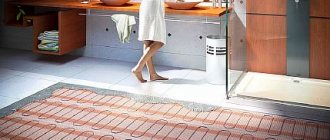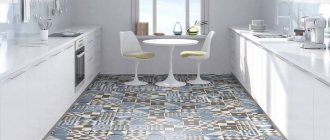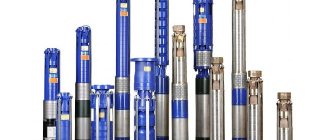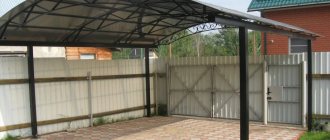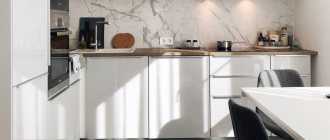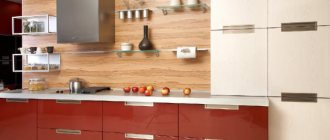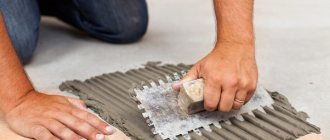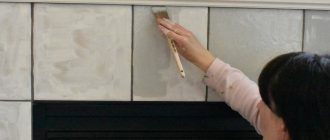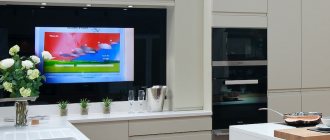The kitchen apron is the vertical section of the wall between the hanging cabinets in the kitchen and the countertop. This is a visible part that gets dirty all the time, since it is located next to the countertop, where food is cut, and the stove. Therefore, the main requirements for an apron are that it be convenient and practical to use, not easily soiled, easy to wash, resistant to temperature differences and chemicals, and also maintain an attractive appearance. Well, of course, he pleased his mistress.
Characteristics of the base material
Acrylic aprons for the kitchen, like any other, do an excellent job of protecting. External characteristics also deserve attention, as the drawing is clear and bright. We invite you to personally evaluate the skins for which acrylic was used, using the link. On the Mosfartuk website there is a whole photo bank with all kinds of images for application on panels and examples of finished works.
What is acrylate? This is organic glass, that is, a transparent solid material of a synthetic type, for the production of which polymers are used. Are splashbacks made from acrylic different from those made from regular glass? Yes, but only in terms of weight, there is practically no difference between light transmission levels and transparency. Acrylic skins are much lighter, which is their main advantage.
Plexiglas is often abbreviated as PMMA. If you see these 4 letters in the description, you should know that the seller is offering to buy an acrylic apron. The basis for the manufacture of classic skinals is a thermoplastic resin, which goes through a chain of organic chemical reactions (that’s why glass is called the same). If the manufacturer wants to provide the product with increased heat and impact resistance, then it adds other components to the alloy.
Installing an apron
Before installing the plastic, you need to let it acclimatize for several days. PVC is a thermosensitive polymer, so it expands or contracts with temperature changes. This property should be taken into account - if there are joints, leave gaps of 0.5 to 1 cm in these places.
It is better to attach the apron to the wall at the stage of unfinished renovation in the kitchen. To begin with, the surface is primed and marked, and then the panel is glued, following the following technology:
- mark the lines of opposite edges according to the level;
- do the cutting;
- apply an adhesive composition (liquid nails) to the material and press it against the wall; cover the cuts with decorative skirting boards or starting strips;
- The joints are formed with an H-profile.
Advice. make sure that the panels protrude beyond the marked lines. Wall cabinets and countertops should overlap them.
If there are large temperature fluctuations in the kitchen, this method is not entirely suitable. The glue can be replaced with self-tapping screws, and the caps can be masked with furniture plugs, matched by color. The edges and corners of the panels are first drilled, and the apron is attached to the wall through these holes.
If the surface has significant unevenness, arrange a sheathing, and then fasten it with self-tapping screws. Profiles can be used both metal, plastic, and wood.
Properties of acrylic aprons
All the features that are inherent in the base material are automatically transferred to the skins themselves. Since acrylic is environmentally friendly, we can safely say that plexiglass aprons are safe for human health. The panels also have the following properties:
- moisture resistance;
- increased resistance to external influences;
- ease of care.
Acrylic skinals differ from each other in appearance, that is, in thickness and design. Manufacturers make panels 4–12 mm thick. The appearance of the products depends on the processing technique used. A chic design can be achieved thanks to the following techniques:
- milling;
- grinding;
- sawing;
- polishing;
- drilling, etc.
What happens to acrylate if you hit it hard? It will not break into fragments like regular glass; either dents or cracks will appear.
What type of stone is used for a kitchen backsplash?
In this block we will show you how different types of stone look, and below we will describe each type in detail.
Naturally, we cannot show all the variety of colors in one article, but you will know the name of the stones and then you can Google them in more detail.
Acrylic stone for a kitchen backsplash: pros and cons
Acrylic “stone” is plastic, roughly speaking. It just doesn't smell like stone. Any shape with a “stone-like” texture is cast from the liquid mass: even a sink, even a bathtub, even an apron.
It is warm to the touch, light in weight, it scratches and is “patched” with putty from the same mixture (of course, not independently, but with the involvement of professionals, which is very expensive). Ceramic tiles, by the way, are not as artificial a material as acrylic, because they are made of clay.
Also, the advantages include a variety of colors or the ability to make an apron of complex shape (although it is difficult for us to imagine such a need).
Regarding the real disadvantages, we cannot lie to you, so we will write it as it is.
- 1. Acrylic - afraid of high temperatures (which means it can melt in the area of the stove);
- 2. It is afraid of aggressive chemicals (it cannot be washed with any detergent).
- 3. It cannot be washed with abrasive products (don’t dream of quickly scrubbing frozen greasy stains with an iron brush. If you do this, whitish spots will form on your apron very quickly).
What is all this for? For the sake of dubious appearance? Because the apron can be cast in a special mold and made into an elaborate shape? Or, so that the apron is identical to the color of the tabletop? So this is not at all necessary and it is not so beautiful.
No, after all, we do not recommend this material as you wish.
For clarity, here are a few photos of what an acrylic stone apron looks like:
Apron made of quartz agglomerate
But agglomerate is a pretty good thing. It is also considered an artificial stone, but it is based on natural quartz chips, pressed and bonded with plasticizer resins.
It is cold to the touch and has the same weight as natural stone. There can be any colors there.
In our opinion, if we take a stone, then this is the best choice.
Agglomerate does not have the disadvantages of natural stone (you will learn about them below). You can even hit it with hammers, it does not react to heat, you can rub it with iron brushes, and it also does not absorb a drop of fat.
The only thing he is afraid of is “Whiteness” and other similar liquids. Plasticizers, of which there are approximately 10%, become whitish from them. But, on the other hand, what need could push you to wash your apron with a toilet “Duckling”?
A couple of photos of aprons for the kitchen:
It costs about the same as granite, that is, not cheap, but not prohibitively expensive either.
Onyx
Onyx is a very beautiful stone. But he is colorful, even excessively. The apron comes out bright. It comes in different colors, take a look at these photos.
And, if it is so colorful, then you must understand that furniture and textiles should not be flashy, otherwise there will be no effect from such an apron. It is the main focus in the kitchen.
It can be shaded with the same element on the wall. Then it will be very beautiful and solid. In addition, onyx stone is translucent and you can backlight the apron (for example, with an LED strip). It looks simply fabulous.
As for the price, onyx is very expensive. But it’s worth it, it’s spectacular, whatever. Onyx is easy to care for. If it is well polished (and it cannot be otherwise, in the case of an apron), then it will not absorb grease and moisture. It is not worth scratching it with abrasives. But you can even wash it with Domestos.
Pros and cons of a marble apron
Its only advantage is that it is marble and can be seen with the naked eye. This means that your guests will not have even a shadow of doubt about your solvency. Also, marble is beautiful. It is translucent, luminous, delicate.
But it is beautiful on the floor (and over a large area), in the decoration of fireplaces, in statues...
But a marble apron is not God knows what beauty, frankly speaking, it would look great in a kitchen-living room with an area of 25 sq.m. or more.
Marble is the most capricious of all stones.
- You have to dance around such an apron and rub it with a special mastic that closes the pores.
- He is afraid of any coloring liquids (wine, coffee, juice).
- Absorbs fat.
As a result, after five years, such an apron looks very dirty, because few people remember that they need to rub it all the time and immediately wash off the greasy splashes. If you didn’t erase it, they were absorbed for centuries.
Granite splashback
Granite is a strong stone, but beautiful colors are rare for it. Yes, theoretically, there are unusually beautiful breeds: blue, green and red. But try buying them! You won’t see them on every corner, you have to order them and such an apron will cost a fortune.
And yet, we can’t help but mention radiation. There is radiation from granite. And considering that there are now private quarries from which stone can be mined without checking the radioactive background, such a purchase is quite risky. In fact, you won’t run around with the device and measure it yourself?
So, here we can say this: if you are confident in the quality of the stone and have seen the certificates, then you can take it.
Quartzite splashback
The same can be said about quartzite as about onyx. It is bright, beautiful, status-bearing, but overly colorful. In terms of cost, it is slightly more expensive than granite and cheaper than onyx. But it is not transparent, which means there is no way to backlight it.
Quartzite casts mother-of-pearl in different shades (depending on what the original slab was).
It is not too fussy to care for, about the same as granite. And, if the stone is dark, then even greasy spots on it are not visible, since it is variegated.
Basalt apron
Basalt is black granite. It looks very strict, it is shiny and smooth. If such an apron really suits your design, then you can install it. Granite - there is granite and it is quite hassle-free to maintain, it looks stylish and is cheaper than marble.
Pebble mosaic splashback
There are no advantages here, except that it is original, inexpensive and you can show off your craft to your guests. The rest is a complete hassle.
Washing such an apron is a lot of “pleasure”. Grease will get into the cracks (and porous cement in them), and you will have to work hard to clean the surface.
Of course, you can cover it all with transparent glass. But what's the point of this then? There will no longer be any relief and no appearance of the stone surface either.
Brick apron: pros and cons
When it comes to stone, it is impossible not to mention brick aprons. They are made from a cut of old brick, for example, Catherine's. Now it is very popular and especially loved by fans of the loft style. Here are some photos:
Yes, it’s very unique, it looks cozy and interesting, but such an apron is just a nightmare to maintain. Brick is not stone at all, but clay, which absorbs moisture and fat. Washing it is very tedious and takes a long time.
Therefore, if you absolutely need a brick wall in the interior of your kitchen, it is better to install it in another place in the kitchen, where grease and splashes will not reach.
Gypsum tile apron
But this is the worst finish. Plaster is not intended to be washed at all. You just erase it, that's all. Moreover, the pigment on it is located in a thin layer on the surface.
And one fine day you will reach the point where white spots of bare plaster appear on the apron. And this day will come much faster than you expect. And it looks very cheap and inappropriate in the work area. Imitation of stone in this place is simply unacceptable bad taste, seriously.
Here in the corridor or in the decoration of the walls - decorative gypsum stone looks decent. And on the apron is no place for him. Moreover, keep in mind that the surface of the working area there is small, and the artificial stones themselves are very large. Therefore, the design looks rough.
The only plus here is that you can lay out such an apron yourself. But why do you need such profits if you have to withdraw it yourself, too, and very soon?
Types of protective panels for kitchen work areas
Modern technologies for manufacturing kitchen aprons allow us to bring the customer’s most extraordinary ideas to life. Acrylic skinals come in colored, transparent and matte. The surface of the aprons can be made either smooth or textured. When fulfilling an order, manufacturers use the following types of plexiglass:
- colorless transparent;
- color with light transmittance (looks like a tinted analogue);
- white, matte (semi- or completely transparent);
- corrugated;
- colored matte and other combinations.
Nowadays, kitchen aprons with various images are very popular. Photo printing technology is used to apply drawings.
The film with the image is glued either to the inner or outer surface of the panel. For individual customer orders, another method of creating a magnificent, bright design is used - direct printing. A pattern applied to the panel in this way is more “rich” and durable.
average price
Kitchen apron made of ceramic tiles
Tiles have always been, are and will be the best option both in terms of practicality and price.
We placed it in the middle price category, but as you understand, it can be different: very cheap and incredibly expensive. But in general, people more often choose average prices.
There is no point in talking about the advantages of a ceramic tile backsplash; everyone already knows this. The only downside that can be noted is that not everyone can install it themselves, and this doubles the price of the apron.
If you want to study this topic in more detail, we recommend that you read the article on a backsplash made of tiles or boar, as well as the rating of the best Russian tile manufacturers.
Kitchen apron made of finishing bricks
Finishing with real brick became popular at a time when kitchen designs in the “loft” and “grunge” styles came into fashion, suggesting the presence of unplastered walls or other deliberate carelessness of finishing.
A brick apron looks quite nice, but don’t forget that washing it is completely unpleasant! Grease and dirt eat into the structure, are absorbed, and scrubbing it off is long and tedious.
But, if such a prospect does not bother you, why not? As a last resort, when you get tired of washing it, you can cover the wall with tempered glass.
And one more thing: you don’t need to use solid brick for these purposes. A fairly narrow one, which is used specifically for external cladding of houses.
Stainless steel kitchen apron
Stainless steel is still an unusual option in the design of a kitchen work area. But if you have a modern-style interior, we highly recommend paying attention to it. There are simply a lot of advantages here, but there are no disadvantages.
The cost of such an apron will be quite inexpensive, it looks stylish, caring for it is simply elementary, and there is no question of durability!
Some people are simply embarrassed by such a strict appearance and the “coldness” of the metal. But if you look at the photo in the interior, it becomes clear that a stainless steel apron is appropriate in almost any kitchen, not only in the high-tech style, for example.
The only thing you need to consider when purchasing: do not take too thin sheets, they will not hold their shape and an unpleasant rumble may be heard when touched.
Also, you should not take surfaces that are too mirrored, as glare from the sun and lighting will be very annoying.
In addition to smooth sheets, there are also corrugated, matte, and embossed sheets on sale. In general, a good option and affordable, despite the fact that it looks extremely modern and expensive.
Kitchen apron made of acrylic artificial stone
This apron is very similar to natural stone, its price is very affordable and for those who at all costs want to decorate their work wall in the form of rock, this will be a good choice.
No photo printing can guarantee such naturalness. But, when deciding on such a purchase, do not forget about the obvious disadvantages of acrylic artificial stone:
- He is very afraid of scratches
- He is afraid of hot things (he won’t melt from a nearby stove, of course, but if a spark hits him, it will leave a mark)
- He is afraid of aggressive chemicals, the use of which leaves whitish spots on him
But, with all this, acrylic stone slabs have one big advantage: they can be restored! True, if you treat the apron carelessly, then you will have to repair and patch it often, and this is not so cheap.
About service life
After how many years will a kitchen apron become unusable? It all depends on the characteristics of the care and operation of the panel. Skinals will last for many years if you do not use the following when cleaning them:
- abrasives;
- alcohol;
- acetone;
- metal jaws.
To ensure that the skins last for many years and retain their original attractiveness, it is enough to periodically wash the surfaces with a soft sponge dipped in a soapy solution. One more nuance: when installing a kitchen apron, it is advisable to use moisture-resistant sealant at the joints and seams. The service life will also decrease under the condition of strong physical (impact) or temperature (+95 ° C) exposure.
Pros and cons of PVC
Polyvinyl chloride used for finishing work is the most budget-friendly plastic material. This is the easiest option for installation, because... There is no need to pre-prepare the surface and all work can be done independently. PVC is distinguished by a wealth of colors, prints, the presence of voluminous details, and there are even transparent options. This type has a number of significant disadvantages:
- It is not resistant to abrasion, and this characteristic is very important for a kitchen apron.
- It loses strength at a considerable rate, therefore, it will not last long.
- The use of detergents and exposure to light quickly leads to loss of presentability.
- There are gaps between the panels that allow moisture to penetrate, creating ideal conditions for mold to grow.
- Contact with fire is prohibited.
- Environmentally unsafe - may release harmful substances.
Attention! There are also safe options for PVC panels. When purchasing material, you must look at the quality certificate.
Advantages and disadvantages
Plastic, like any other material, has a number of advantages and disadvantages. Regarding the design of a decorative apron for the kitchen, the advantages are as follows:
- Availability in terms of price
Today, plastic is the most budget option, after MDF panels for a kitchen apron.
- Resistance to moisture, which is very important for a kitchen where fumes are constantly present.
- Not susceptible to rotting.
- Simplicity and ease of care, it is enough to periodically clean with a damp cloth.
- The material is light in weight and easy to give the desired size and shape; plastic can be easily cut to fit sockets, switches, etc.
- Easy to install.
- A variety of decorative options for designing an apron.
The consumer, based on his preferences and the palette of the kitchen set, can choose a material with imitation wood, tiles, a plain material or with photo printing.
- High temperature resistance.
Especially if the kitchen backsplash panels are made of polycarbonate - its melting point is over 120 degrees.
Before purchasing a material, you must study its certification to avoid fire hazards.
- Resistance of polycarbonate to aggressive detergents.
Minuses
- Susceptibility to scratches – especially on plain PVC sheets.
- Formation of water stains.
To avoid this, wipe the plastic kitchen apron dry with a soft cloth.
- Deformation at high temperatures and release of toxic substances during combustion.
- Creation of a fire hazardous situation.
But all these disadvantages relate mainly to plastic made of PVC.
When choosing polycarbonate, you can be sure that it will practically not be scratched, will not break, will not break, and will be easy to clean.
What to choose for your kitchen
Every owner of a house or apartment wants to have a kitchen with an original, impressive design. This is why many people decide to buy skinals to finish the walls above the kitchen work area. Glass panels with original colors or unique patterns will effectively complement the interior or even become its highlight. Having decided to order a glass apron, you can be sure that the design of the room will have a beautiful look, similar to the design of an experienced designer, which will not go unnoticed by your guests.
Typically, custom-made skins are installed by the company that created them. This is exactly the approach our company Skinali-Fresh provides by creating kitchen glass aprons and installing them. Installation of the panels is carried out quickly, does not lead to severe contamination of the room, and therefore can be carried out even after the completion of the repair.
Steel
In a kitchen styled like futurism, minimalism, hi-tech, etc., in the kitchen corner of a loft, wall panels made of smooth hardened steel would look quite appropriate. This is a hygienic, durable, inexpensive and easy to install apron that is resistant to all types of kitchen stains and high temperatures. The downside of this material may be its inappropriateness in most interior styles. Sometimes a steel apron is installed “spotwise” - for example, for protection in the slab area, and the remaining space is finished with tiles or mosaics.
Steel apron
Fake diamond
An apron made of artificial stone is often made fused with the countertop - the surfaces simply blend into one another, which is extremely convenient, hygienic and practical, although quite restrained in terms of aesthetics. Artificial stone panels can also be used to decorate an apron in the “traditional” way - they are lighter and easier to install than fragile and heavy natural stone, and much more cost-effective. Using artificial stone, for example, lithoceramics, you can create an apron that not only imitates the surface of untreated stone, but also, for example, a “marble” or “granite” apron for a luxurious kitchen in classic, empire, and minimalist-chic styles.
Features and nuances of installation
Installing a plastic kitchen apron does not require any special skills or knowledge. Almost anyone can do the installation. Only for this you will need the appropriate materials and tools:
- hammer drill, screwdriver, level, tape measure,
- stapler with staples, glue (in case of gluing),
- material for sheathing - bars or metal profile,
- hangers, dowels, self-tapping screws for sheathing and with a press washer for fastening the material.
The height of the apron directly depends on the installation of the hood in the kitchen.
If you use a hood mounted into a countertop, then the height is limited by the cabinets, and in the absence of hanging furniture, the height is chosen independently.
How to attach a plastic apron in the kitchen?
There are 2 main ways to install plastic sheets:
- Glue - this option is only possible if the wall is completely flat.
It should also be taken into account that glue can damage the surface, and the sheets of material themselves cannot be reused in another place.
If you want to decorate a kitchen apron by gluing plastic sheets to the wall, the main amount of work consists of preparing the surface.
It must be cleaned of old materials, primed, cracks and crevices treated, and, if necessary, leveled with plaster. After this, mounting adhesive is applied to the material, which is applied to the wall.
- Screwing it using self-tapping screws is the most reliable and affordable option.
The sequence of actions when installing plastic sheets on self-tapping screws is as follows:
- Inspection of the base. If it is smooth, then you can proceed to direct fastening of the material. Otherwise, you will have to go through the second stage.
- Surface preparation. It is carried out in 2 ways: beacons are placed in one plane, on which sheets of plastic subsequently rest;
- creating a plane on which the apron will rest using lathing.
The fastenings and edges of the apron are hidden with decorative elements or plastic parts - plugs, caps, baseboards.

